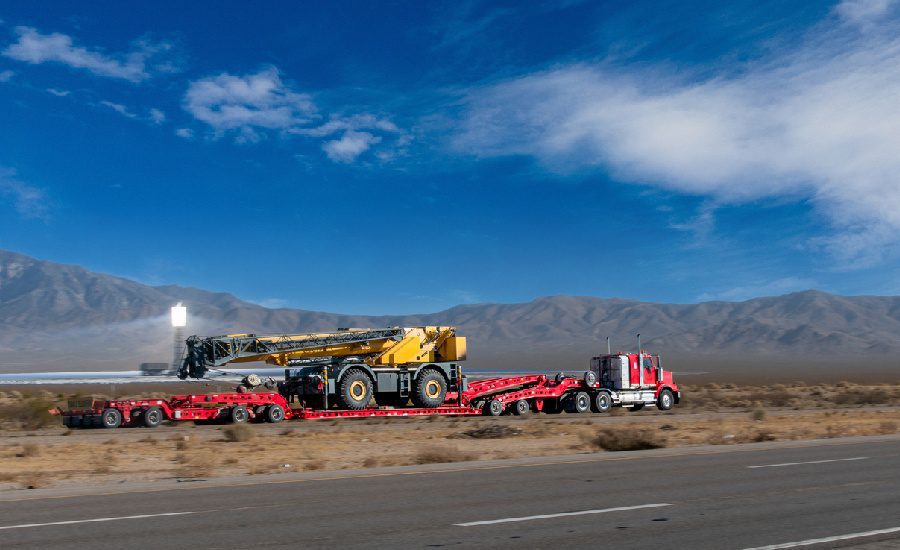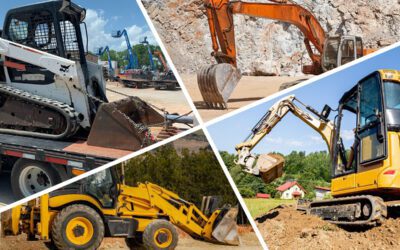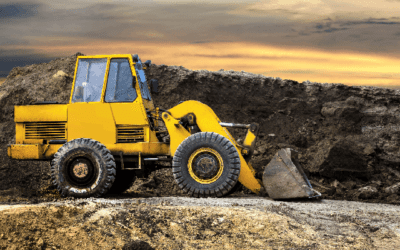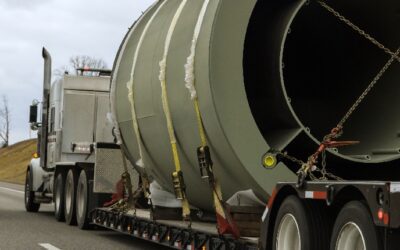How to Transport Construction Equipment Safely
Shipping construction machinery requires experience and attention to detail, especially if it’s an oversized load or moving long distances. Titan Worldwide offers experience in heavy equipment transport and a track record of heavy load securement, so you can rest assured that your equipment will reach the job site safely and on time.
Since construction equipment is essential to your company, nothing is left to chance—right down to the final tie-down. Whether you need a flatbed, RGN, step deck, or lowboy, every piece of equipment is loaded properly and securely before we hit the road with your front-end loader, forklift, or dump truck.
Your time is essential, and we make sure to use it wisely. Leave the details to us. Our professionals know the heavy equipment shipping process and will obtain any special permits, provide pilot cars (if needed), and complete all the paperwork.
To help you get started, our team has put together the following safety guidelines to make sure you’re considering every option when moving your construction equipment.
Why Safety Matters When Transporting Heavy Machinery
Heavy equipment transport services are about much more than moving machinery from one place to another using a flatbed trailer. According to ForConstructionPros.com, nearly half of the injuries related to transporting machinery happen during loading and unloading. Most of these may have been prevented with proper planning and preparation.
Construction equipment comes in various forms, including:
- Excavators
- Articulated dump trucks
- Backhoe loaders
- Forklifts
- Road graders
- Skid loaders
- Bulldozers
- Asphalt pavers
- Boom lifts
Each one of these machines offers unique challenges for transport providers and requires experience and knowledge to move them safely. Here is what you should consider in the three primary steps of construction equipment transport: pre-transport, during transport, and unloading.

Pre-Transport Checklist
Before Loading
Choose your support personnel, typically an equipment operator and ground guide, and ensure they have the proper personal protective equipment (PPE).
Plan the best route and gather all the paperwork. Consider the weight and size restrictions for hauling heavy construction equipment, and obtain permits since oversized and overweight loads require special permits before transporting them on most roads.
Determine whether a double drop, step deck trailer, or removable gooseneck will work for your load, keeping in mind that large equipment loaded on a trailer might not clear some overpasses. Conduct a thorough inspection of the construction equipment, transport vehicle, and trailer before loading. Also, decide what securement equipment you need and ensure it’s in good working order.
If you are unfamiliar with the machinery you’re hauling, check the machine’s user manual for the manufacturer’s recommendations on shipping. If no manuals are available, check for one online.
Loading the equipment
After choosing a level and stable loading area away from others, you are ready to begin loading.
Drive the equipment slowly onto the trailer with the heavy side of the load facing forward and as close to the front as possible and directly up to the trailer’s bulkhead or header board, if it has one. You might be loading the equipment by backing it onto the trailer to get the proper positioning.
Securing the Load
Once it is in place, lower any appendages, such as excavator arms, bulldozer buckets, backhoe booms, or other moving parts, to the trailer floor. Apply the parking brake on any wheeled machinery and secure all equipment attachments, work tools, and accessories.
Secure the equipment using the recommended amount of tie-downs and cargo securement equipment. Only use securement points on the trailer and the machinery that look strong and undamaged. Verify that all the securement points placed on the machine by the manufacturer are close to the front and rear of the machine and that tie-downs cannot damage the equipment.
Here are a few more tips for securing loaders, excavators, bulldozers, and most other construction machinery:
- Ensure there is no slack in any of the chains, and any excess chain should be wrapped around the remaining link.
- Each chain must be secured linearly, without angles, bends, horizontal twists, or downward force.
- Use a minimum of four chains, with two linked to the trailer’s front corners and the other two to its back corners. The opposing forces will create tension keeping the heavy machinery from moving.
- The size of the hook and chain should be reviewed every time to ensure they are tight and complementary.
During the Equipment Transport
Transporting heavy construction equipment safely is a serious endeavor. To begin with, you must plan the best route for your driver, remembering that the safest course is the one with the fewest obstacles, such as overpasses, bridges, challenging terrain, tunnels, and tight turns. Avoiding them protects the driver and the heavy machinery.
During the trip, the driver must follow all state and federal laws, including adhering to the speed limits for oversized or overweight freight and respecting the maximum driving time of fourteen hours and the required ten-hour break. Thorough route planning considers all the critical state regulations for heavy equipment transportation.
Construction equipment’s safe and legal transport continues long after starting the ignition. Heavy load securement requires check-ins and inspections on the road, especially when driving long distances. Anyone transporting heavy equipment must be aware of the rules related to cargo inspection. The driver should also stop the vehicle regularly to check for any changes or damage to the cargo, chains, or tie-down points.
To ensure your driver makes these inspections, you can use asset tracking software (on the driver’s cell phone), where they enter inspection information after a quick scan of the equipment’s QR code.
Unloading and Offloading Tips
You don’t want to ruin a safe trip to this point by carelessly unloading the construction equipment. As with the other parts of the process, following a few essential steps and risk-mitigation strategies to ensure the success of this last step.
Clear the Unloading Area
Before the transport vehicle arrives, clear the unloading site in the receiving yard. In addition to clearing away dirt and debris, warn all personnel of the cargo’s arrival, so only relevant crew members are in the area when the transport vehicle arrives. Wet and muddy ramps and uneven unloading ground are as undesirable and unsafe as they were during the loading process.
Make a Final Check
Walk around the load and perform a final condition survey, inspecting the equipment’s tires and hitches. Review the roles of the spotter and equipment operator before breaking down the chain tie points. Also, do a brief survey on the condition of the tie-downs before releasing them to ensure the load has not shifted.
Release the Load
Release the chains one at a time, starting with the rear corners, while unraveling any excess chain wrapped around the links. Then, begin carefully loosening the tie-downs with their ratchet-style wrench boomers. Remember that these chains and binders have been wound tight and are under pressure. You don’t want a metal chain unexpectedly snapping up because joints and tension weren’t adequately reduced with the ratchet boomer.
Slowly Back the Machine Down the Ramp
Keep a safe distance between the piece of equipment and the spotter. The equipment operator’s visibility could be blocked, so position the spotter where they are accessible but at a safe distance. Keep everyone else away from the unloading site while the machine backs down the ramp and focus on safely ushering it to the ground.
This step may be different if you’re using a crane or other method to unload your heavy equipment. Safety and communication are still paramount to a successful final step.
Consider a Heavy Equipment Transport Company
Let’s face it, too many construction companies are left to their own devices when transporting their equipment. Avoid the following pitfalls of not using a transport company:
- Choosing the wrong transport vehicles (truck and trailer) for the type of machinery being moved.
- Encountering obstructions along the route caused by poor planning.
- Accidents caused by ejected material and moving machinery.
- Damage to roadways and infrastructure.
- Damage to the construction equipment from inadequate securement.
- Injury to inexperienced or untrained personnel.
- Not obtaining the correct special permits.
Planning is the best way to mitigate the risks associated with construction equipment transport successfully. The safest, most efficient method of moving heavy equipment is with an experienced heavy equipment transporter that will save you from all the costly mistakes of trying to do it alone.
Choose the Very Best Heavy Haulers – Titan Worldwide
When moving your construction equipment, choosing a reliable, reputable shipping company specializing in heavy equipment transportation is critical. Titan Worldwide has specialized trailers, shipping containers, and other heavy-hauling transport vehicles to meet all your equipment transportation needs. You can rely on our team to safely transport your construction equipment on time, and the experts at Titan will carefully transport your equipment so you can focus on your construction work. Call today for a free quote and to learn more about our construction equipment transport services!




